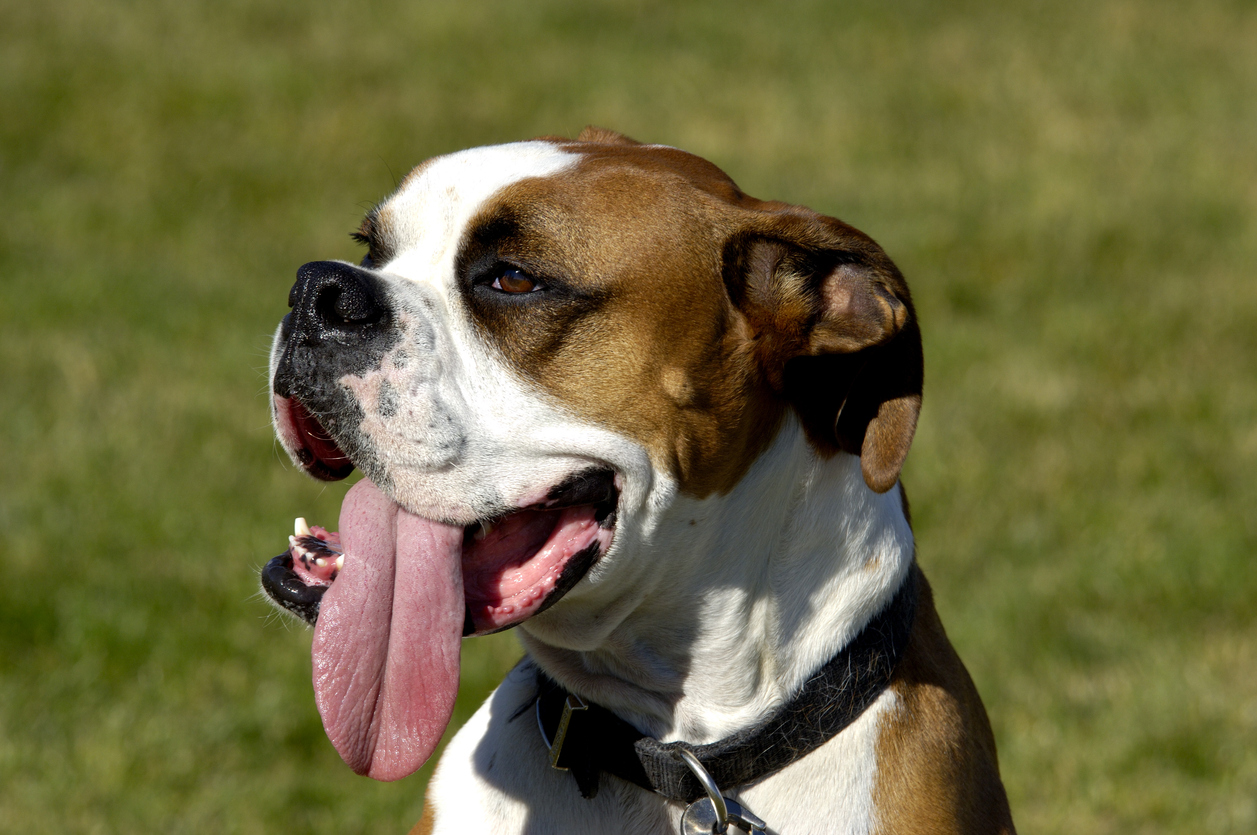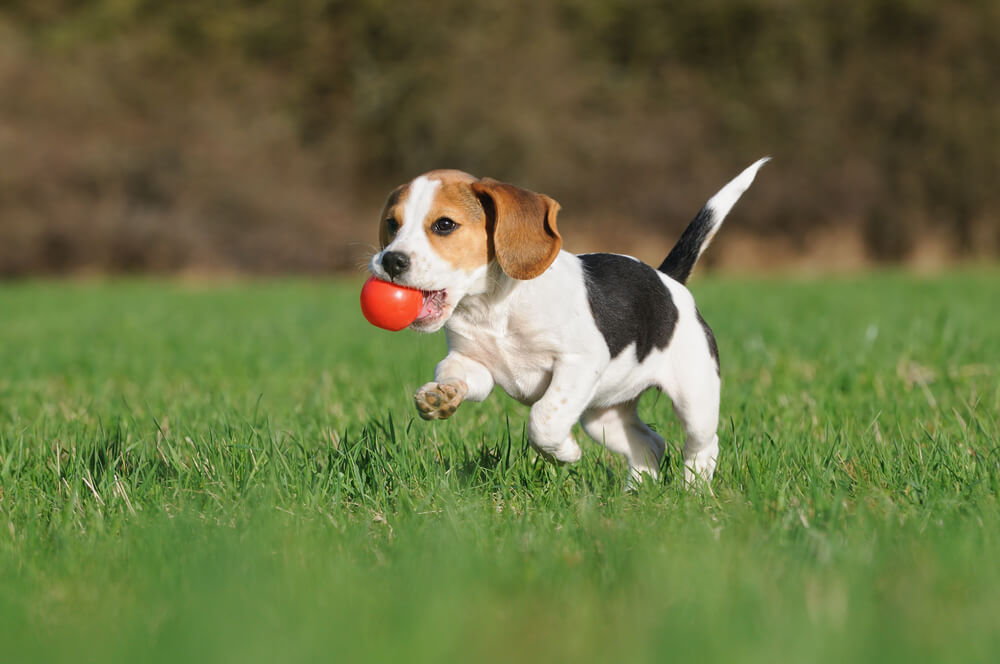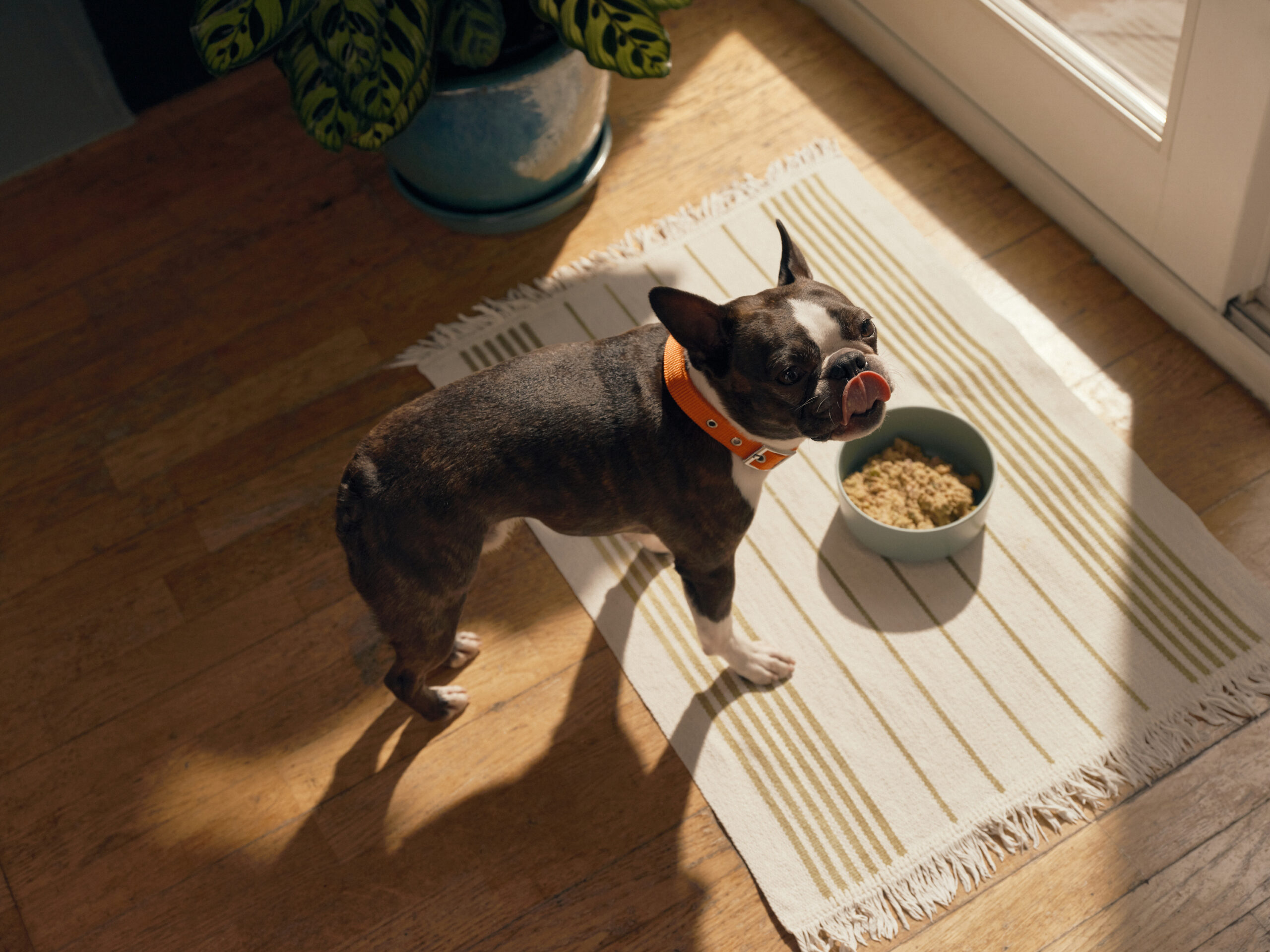Hey Ollie blog readers! We’re offering you an exclusive 60% OFF your starter box! Try now!
As the temperatures rise during the summer months, so do the risks to your dog’s health. Heat-related conditions such as heatstroke are among the most serious and life-threatening issues dogs can face during warmer weather. Dr. Lindsay Cassibry, one of Ollie’s in-house vets, shares her advice on how to handle common summer safety hazards like a pro.
How can you tell if it’s too hot for a walk?
One of the most frequent questions from dog parents is how to determine if it’s too hot for a walk. A simple and reliable test is the pavement test:
- Place the back of your hand on the pavement for seven seconds. If it’s too hot for your hand, it’s definitely too hot for your dog’s paws.
- Time of day also matters. Aim for walks in the early morning or late evening when surfaces have cooled. Generally, outdoor temperatures under 75°F are safe for most dogs, but caution is advised between 75–85°F—especially for dogs with thick coats or short snouts.
- When temperatures exceed 85°F, outdoor activity should be limited to short potty breaks, and once it hits 90°F or higher, it’s safest to keep exercise indoors entirely. Humidity also increases the danger, as it interferes with dogs’ ability to cool themselves through panting.
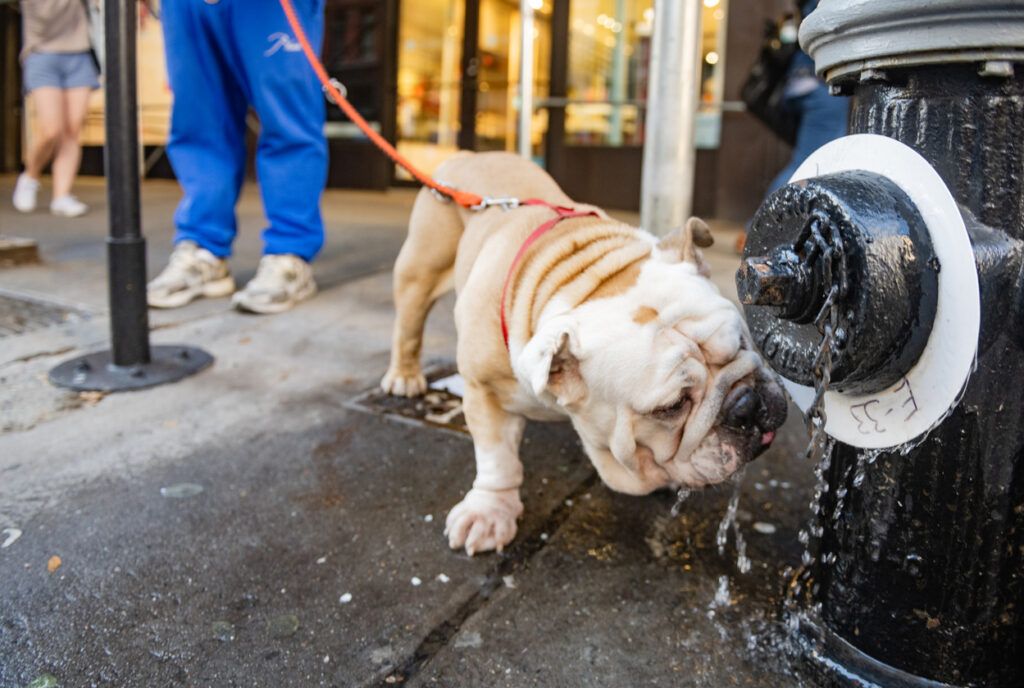
Are there particular breeds that may be more at risk during hotter months?
- Some breeds are particularly vulnerable to the heat. Brachycephalic breeds—such as bulldogs, pugs, Boston terriers, and shih tzus—have shorter nasal passages that make it more difficult to pant effectively, putting them at higher risk for overheating. These dogs should never be exercised during the hottest part of the day and should always have access to air-conditioned spaces.
- Similarly, breeds with thick coats like huskies, Bernese mountain dogs, and chow chows can retain heat due to their dense fur. While shaving is not generally recommended, regular grooming to remove the undercoat can help improve airflow and temperature regulation.
- Senior dogs, puppies, and those with underlying health conditions also have less efficient thermoregulation and should be closely monitored in hot weather.

How can you make sure your puppy is safe in summer?
For puppies, extra caution is needed. Their paw pads are more sensitive and more easily burned by hot surfaces. Their small bodies dehydrate quickly, and they don’t yet know their own limits—making supervised, short bursts of playtime in shaded areas the safest choice. Always bring water when outdoors, and offer plenty of breaks. Portable water bowls are a great summer essential. When it comes to socialization and training, schedule these activities during cooler parts of the day. And never, under any circumstances, leave a puppy (or any dog) in a parked car—even with the windows cracked. Internal car temperatures can rise dangerously high in just a few minutes.

How high heat affects dogs and how to handle it
Signs of heat exhaustion or heatstroke
Dogs can suffer from heat exhaustion or the more severe heatstroke when exposed to high temperatures, particularly when they’re active or unable to cool down effectively.
Early signs of heat exhaustion include:
- Excessive panting
- Drooling
- Rapid breathing
- Bright red gums
- Weakness
- Lethargy
If the condition progresses, symptoms can include:
- Vomiting
- Diarrhea
- Staggering
- Collapse
- Seizures
If you suspect your dog is overheating, take immediate action. Move them to a shaded or air-conditioned area right away. Offer cool (not cold) water, and dampen their body with cool water—especially on the paws, underarms, belly, and head.
You can also place a fan nearby to help lower their body temperature. Do not use ice or very cold water, as this can cause shock. Always seek veterinary care if symptoms are moderate or severe, or if your dog doesn’t recover quickly after cooling efforts.
Best way to keep a dog hydrated, especially when it’s hot outside
Hydration is one of the most critical ways to protect dogs during hot weather. Always offer fresh, cool water throughout the day. Use multiple water bowls around the house and outdoors. On walks, bring a portable dog water bottle or collapsible bowl, and offer water frequently—even if your dog doesn’t appear thirsty.
Some dogs are reluctant to drink more during hot weather. To encourage hydration, try adding water to their food, or offering ice cubes as a treat.
Signs of dehydration include:
- Dry gums
- Sunken eyes
- Lethargy
- Loss of skin elasticity
If you suspect dehydration and your dog won’t drink, seek veterinary advice immediately.

Do dogs get sunburned?
- Yes, dogs can absolutely get sunburned, especially those with short, light-colored fur, pink skin, or areas of thin hair coverage like the nose, ears, belly, and inner thighs. Breeds particularly at risk include dalmatians, pit bulls, boxers, whippets, and bulldogs, among others.
- Sunburn can lead to red, flaky, or painful skin and increases the long-term risk of skin cancer. To protect your dog, limit sun exposure during peak hours and provide ample shade when outdoors.
- For high-risk dogs or longer outings, consider using a pet-safe sunscreen (never human sunscreen—it can contain toxic ingredients like zinc oxide or salicylates). Lightweight, UV-protective clothing or sun hats made for dogs can also help, but also be cautious that these can hold in heat and make it harder for them to cool down.
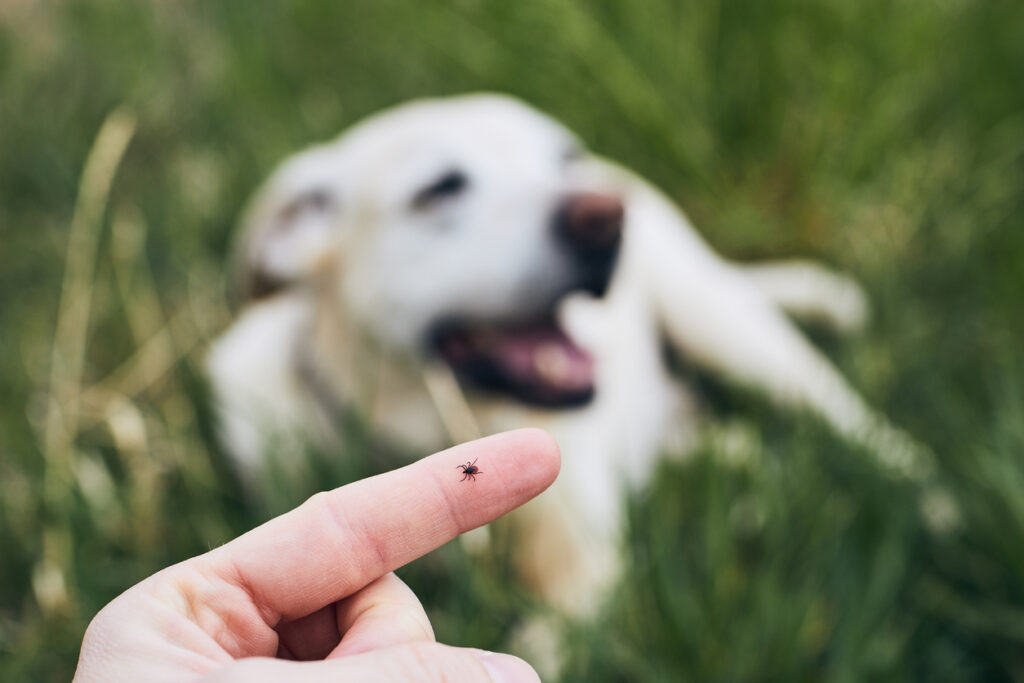
Protecting your pup from parasites
Summer is prime time for external and internal parasites that can seriously impact your dog’s health. Fleas and ticks are the most well-known offenders. Fleas cause intense itching, allergic reactions, and can transmit tapeworms. Ticks can carry dangerous diseases such as Lyme disease, ehrlichiosis, and anaplasmosis. Mosquitoes are also a major concern because they transmit heartworms, which can be life-threatening if not treated.
To protect your pup, keep them on year-round parasite prevention—including flea/tick treatments and heartworm medication as recommended by your veterinarian. Check your dog thoroughly after hikes or walks in wooded or grassy areas, especially around and in the ears, under the collar, between the toes, and under the tail. For mosquito-heavy areas, avoid walks at dusk and dawn when mosquitoes are most active.
It’s also important to watch for intestinal parasites like hookworms and roundworms, which can be contracted from areas where other dogs have used the bathroom. Regular deworming, using preventatives, and fecal checks by your vet are essential, especially during the active summer months when outdoor exposure increases.

Other summer hazards to watch out for
Foxtails are one of the most dangerous but often overlooked summer hazards. These barbed grass seed heads are found in dry, grassy areas—particularly in the western U.S.—and can burrow into your dog’s skin, ears, nose, eyes, or paws, causing painful infections or even migrating internally.
Symptoms may include head shaking, paw licking, sudden sneezing, or swelling in affected areas. Always check your dog thoroughly after outdoor play, especially in dry fields or overgrown trails. Prompt vet attention is critical if you suspect a foxtail has embedded.
Other summer hazards include bee or wasp stings, which can cause allergic reactions in sensitive dogs, and heat-retaining surfaces like asphalt that can burn paw pads. Watch for toxic plants like mushrooms, lilies, or sago palms, and avoid stagnant water where blue-green algae or bacteria may thrive—both can be fatal if ingested.
For pups who love swimming, remember that ear infections are also more common in summer due to trapped moisture. Dry your dog’s ears thoroughly after swimming or baths, and use a vet-approved ear cleaner if they’re prone to irritation. Also, be mindful of wet collars or harnesses, which can trap moisture against the skin and lead to hot spots—painful, inflamed areas that can worsen quickly. Remove wet gear and dry your dog off thoroughly after any water play.
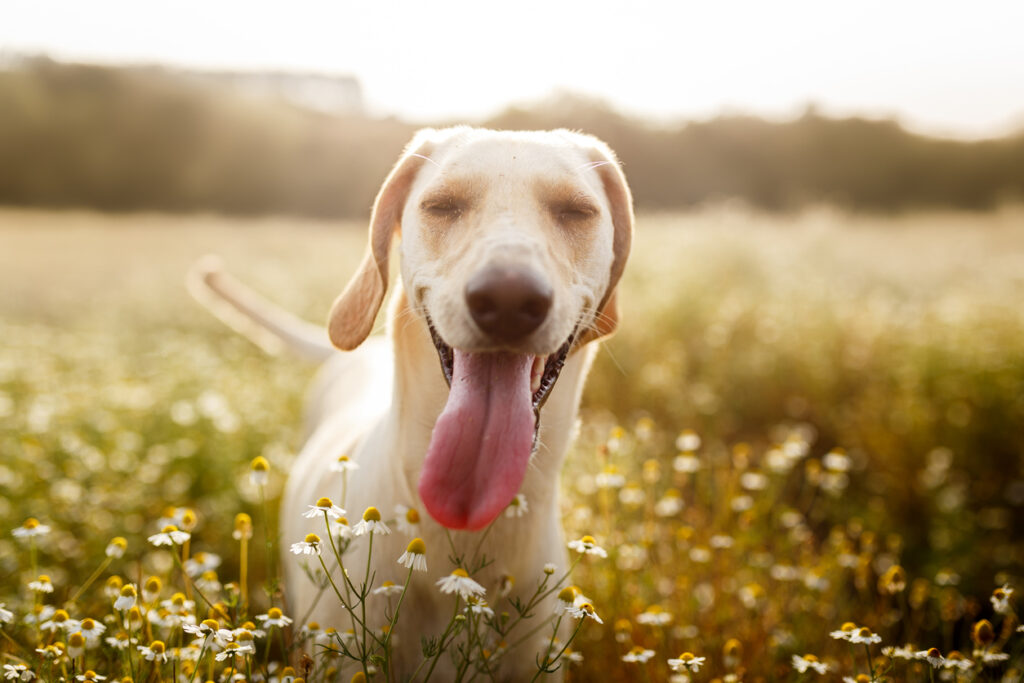
Dr. Cassibry’s #1 piece of advice
Always be proactive, not reactive. Dogs can’t tell you when they’re overheating, dehydrated, or uncomfortable—so it’s up to you to plan ahead: walk early or late in the day, carry water, avoid hot surfaces, never leave your dog in a parked car, and keep parasite preventatives up to date. A little caution goes a long way in preventing emergencies and keeping your pup safe, happy, and thriving all summer long.
Tagged As:

The nutrition your dog needs,
the food they want.

Enjoying our articles? Subscribe our Newsletters and get new articles directly to your inbox
You might also like
30 July 2025
6 MINS READ
Fresh Dog Food for Picky Eaters: A Tasty Solution
Feeding a picky eater can feel like an unsolvable riddle. One day your dog is happily chowing down, and the next, they turn their nose up at the exact same food. If you’ve found yourself trying …
by Ollie Pets
30 July 2025
6 MINS READ
Top Nutrition Tips for Dogs with Digestive Issues
Watching your dog struggle with an upset stomach, diarrhea, or gas is difficult for any pet parent. Digestive issues are common, but the good news is that the right nutrition can make a world of d…
by Ollie Pets
30 July 2025
6 MINS READ
Ingredients to Support Healthy Digestion for Dogs with Sensitive Stomachs
As a dog parent, seeing your pup struggle with gas, loose stools, or vomiting can leave you feeling helpless and worried. The good news is that one of the most powerful tools for managing a sensit…
by Ollie Pets
